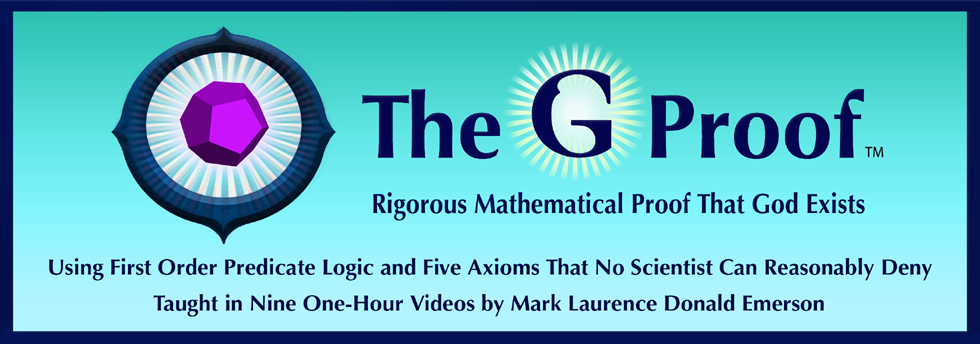Video 4: Crash Course in Predicate Logic, Part A: Quantifiers
Short Synopsis of Video 4
Predicate Logic is built on Sentential Logic. But Predicate Logic goes further by looking inside of sentences. This Video 4 is the first of two Videos that teach First Order Predicate Logic. Teaches what a predicate is (a sentence fragment with blanks in it), and how variables (nouns) are used to fill in the blanks in predicates to make sentences. Presents three new symbols, Logic Rules 10-14 and two example proofs. This is the logic used to prove God exists.

|
Long Synopsis of Video 4
Predicate Logic is built on Sentential Logic. Predicate Logic goes further by looking inside of sentences. First Order Predicate Logic is taught in two Videos: this Video Four is Part A — Quantifiers.
Begins by Summarizing Logic Rules 1-9 presented in Video Three. Briefly discusses the relationship between logic and grammar. Teaches what a predicate is (a sentence fragment with blanks in it), and how variables (nouns) are used to fill in the blanks in predicates to make sentences. Capital letters are used for predicates and lower case letters are used for variables.
Presents three new symbols that mean: For All (upside-down A, universal quantifier), There Exists (backwards E, existential quantifier), and Equals (=). Explains the crucial distinction between free variables and bound variables. Then teaches five additional Logic Rules and presents two proofs, as follows.
First, Logic Rules 10 and 11 are presented — Universal Instantiation (UI) and Universal Proof (UP). Example Logic Proof 4 is presented using these rules as well as some rules from Video Three.
Second, Logic Rules 12-14 are presented — Existential Instantiation (EI), Existential Generalization (EG), and Substitution of Equals (SE) which was also used in geometry proofs. Example Logic Proof 5 is presented using these rules as well as numerous prior rules.
Each of the five new rules is justified by showing that it preserves truth. The proofs are done in the same style as in Video Three, but additional colors are used to show how variables change from one line to another. This is the logic used to prove God exists. But some more material is needed that is presented in Video Five.
Errata for Video 4
50:55 — Mr. Emerson says "for all z" when he should have said "for all t."
